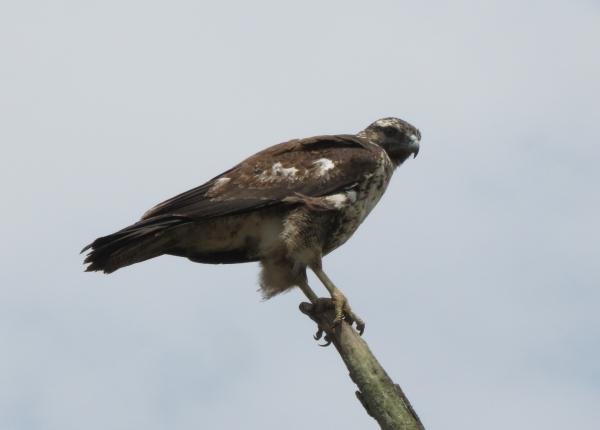How The Peregrine Fund is Helping
Though The Peregrine Fund doesn't work directly with Black-chested Buzzard-eagle, we do support students who are studying this beautiful bird of prey. Additionally, our efforts in scientific research, habitat conservation, education, and community development help conserve raptors around the world. We also supply literature to researchers from our avian research library, which helps scientists the world over gather and share important information on raptor conservation. We also run the Global Raptor Impact Network which gives raptor researchers tools to more efficiently conduct their own studies while contributing to a global program. GRIN also provides citizen scientists a way to participate in raptor science and conservation. Additionally, we support the Neotropical Raptor Network that helps support raptor conservation in the neotropics by fostering communication and collaboration among biologists and conservationists in the region.
Where They Live
The Black-chested Buzzard-eagle is a resident of South America. In most regions throughout its range, it can be found soaring, hunting, or nesting in middle elevations and montane regions, even above treeline. However, it does descend to the coast and lowlands in some parts of its range. This large hawk favors arid, open habitats in rugged terrain.
What They Do
This beautiful raptor is aptly named. Perhaps its most distinguishing feature is the dark gray upperparts and breast that truly stand out against its white belly. This bird is known to spend a lot of time soaring in wide circles, either alone or in pairs. When not surveying the land below in flight, it will spend time perched on rocky cliffs, on power poles, or on the ground, but seldom in trees.
Why They Need our Help
The Black-chested Buzzard-eagle is categorized as a species of Least Concern. It is relatively common throughout much of its extensive range. Researchers in Brazil believe this hawk's range is expanding, whereas in Chile its populations appear to be in decline. This species suffers many threats including loss of habitat, and persecution by ranchers, either by poisoning or shooting, because these hawks will feed on domestic lambs.
What They Eat
This bird of prey has a long list of prey items on its menu. It will feed on small mammals, birds, snakes, lizards, and even carrion. Researchers have documented it raiding bird nests to feed on the nestlings, and, at least one individual chasing ants in flight! In many areas throughout its range, these hawks depend on domestic pigeons as an important food source.
These powerful hawks are excellent hunters and will sometimes work together in pairs to hunt pigeons cooperatively.
Nests, Eggs, and Young
These hawks collect sticks which they use to build large, bulky nests on rocks, ledges, cliffs, trees, or even on the ground. Once the nest is ready, the female will lay 1-3 eggs, which are mostly plain white, but sometimes are lightly decorated with brown spots. After the eggs are laid, both the female and the male will spend equal time incubating and otherwise caring for the eggs. When the nestlings hatch, they lack downy feathers that most raptors are born with. About a month later, though, their feathers will have grown in nicely. After around 50 days, it will be time for the nestlings to fly from the nest for the first time. However, they will remain in their parents' territory for a while as they improve their flying and hunting skills.
Black-chested Buzzard-eagle and the World Center for Birds of Prey
The World Center for Birds of Prey offers fun ways to learn about birds of prey. Interactive activities, tours, interesting videos and a children's room with activities from coloring sheets to quizzes to costumes are all available for our guests. We also have knowledgeable, on-site staff to answer any questions you may have about Black-chested Buzzard-eagles or any other bird of prey.
References:
Brower, R. M. and R. L. Thorson (2020). Black-chested Buzzard-Eagle (Geranoaetus melanoleucus), version 1.0. In Birds of the World (T. S. Schulenberg, Editor). Cornell Lab of Ornithology, Ithaca, NY, USA. https://doi.org/10.2173/bow.bcbeag1.01
Global Raptor Information Network. 2021. Species account: Black-chested Buzzard-eagle Geranoaetus melanoleucus. Downloaded from http://www.globalraptors.org on 16 Sep. 2021
Pavez, E.F. 2001. Breeding biology of the Black-chested Eagle Geranoaetus melanoleucus (Aves: Accipitridae) in Central Chile.] Revista Chilena de Historia Natural 74:687-697. (In Spanish)









